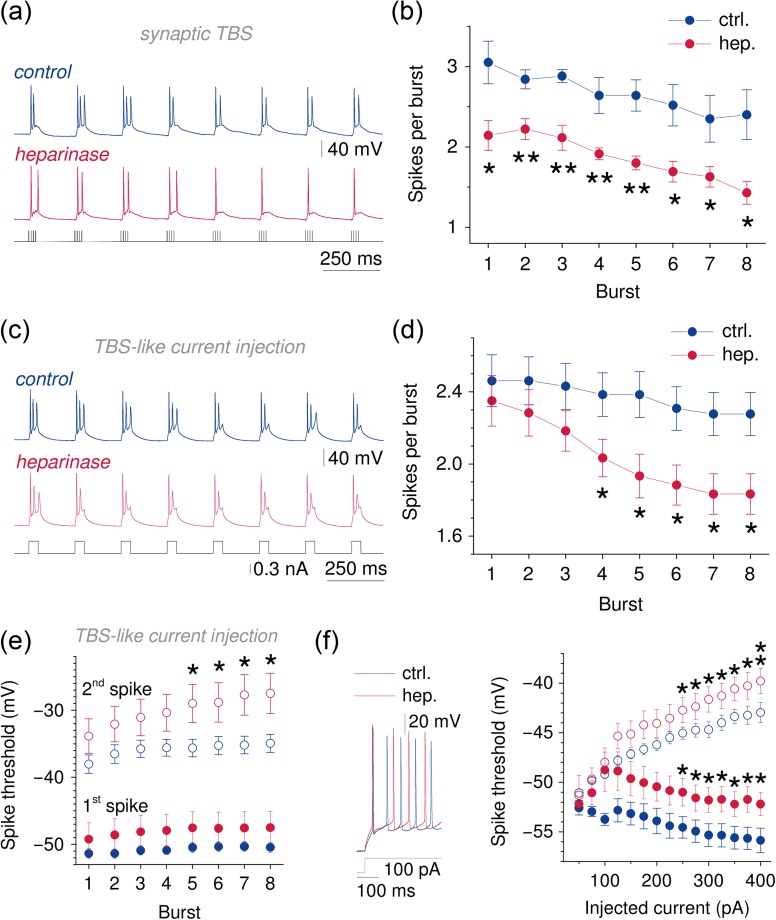Figure 4.
CA1 pyramidal cells generate fewer action potentials during TBS and TBS-like current injections after heparinase treatment. (a, b) Representative current clamp recordings from CA1 pyramidal cells during synaptic TBS from control (blue, top) and heparinase (red, middle panel) treated slices (stimulation pattern, bottom panel). Note the reduced number of action potentials generated during individual bursts after heparinase treatment. The number of spikes was analyzed for each burst, averaged over 5 TBS cycles and found to be lower in heparinase-treated neurons (2-way repeated measures ANOVA, P = 0.003, n = 5 for control slices and 7 for heparinase-treated slices). (c, d) Current injections with a TBS-like pattern (40 ms, 8 times at 5 Hz, 5 cycles as in a, b) evoked fewer action potentials in CA1 pyramidal cells from heparinase-treated slices (2-way repeated measures ANOVA, P = 0.040, n= 13 and 12 for control and heparinase-treated slices, unpaired t-tests for individual bursts). This suggests that reduced neuronal excitability may underlie deficits of Ca2+ influx and LTP. (e) The threshold of spikes evoked by TBS-like current injections was progressively increased after heparinase treatment. While no effect was observed on the first spike in each burst (2-way repeated measures ANOVA, P = 0.239) the threshold of the second spike was increased during repetitive stimulation (2-way repeated measures ANOVA, P = 0.031, unpaired t-tests for individual bursts; first and second spike, filled and empty circles; color coding as above, n = 13 for control and n = 13 and 12 for first spikes and 13 and 10 for second spikes). (f) A qualitatively similar increase of spike thresholds was unmasked when spiking was evoked by constant current injections of increasing intensity in the current clamp configuration (same color coding as in e, sample traces and current injection left panel, statistics right panel, n = 10 for control and 8 for heparinase treatment, 2-way repeated measures ANOVA, P = 0.043 and 0.030, unpaired t-tests).

